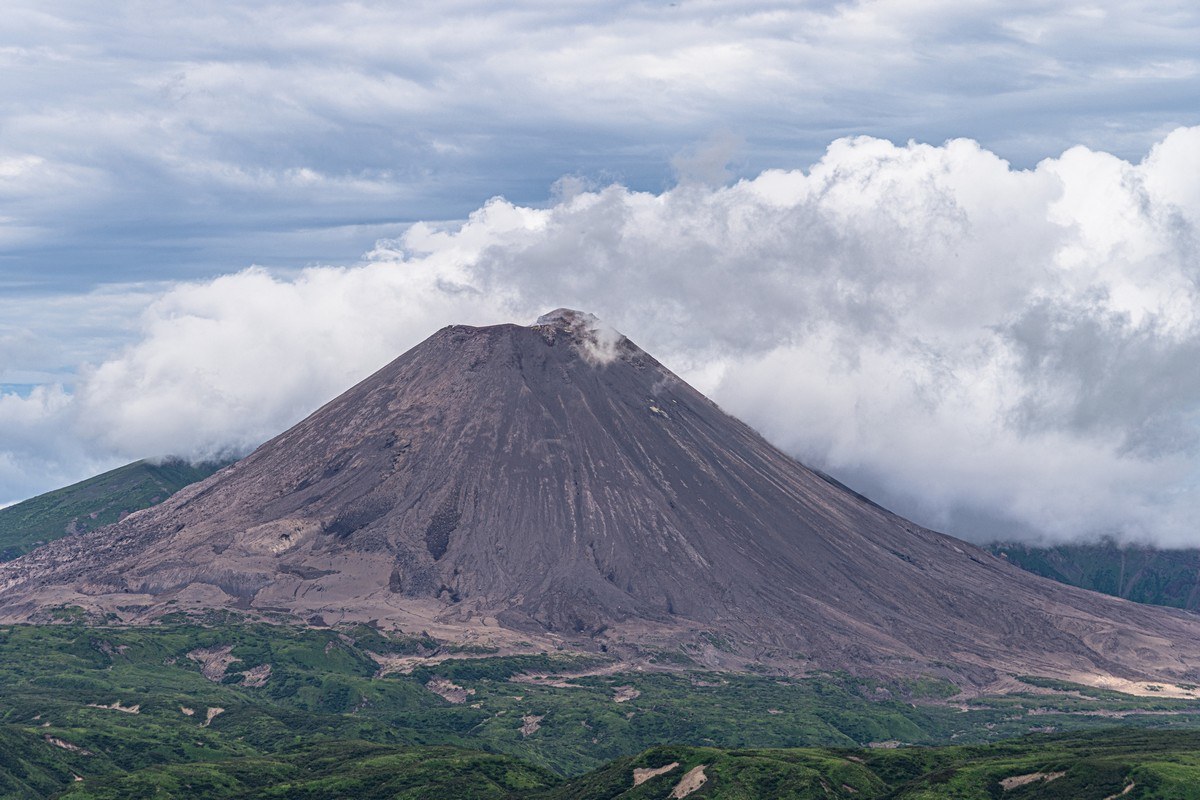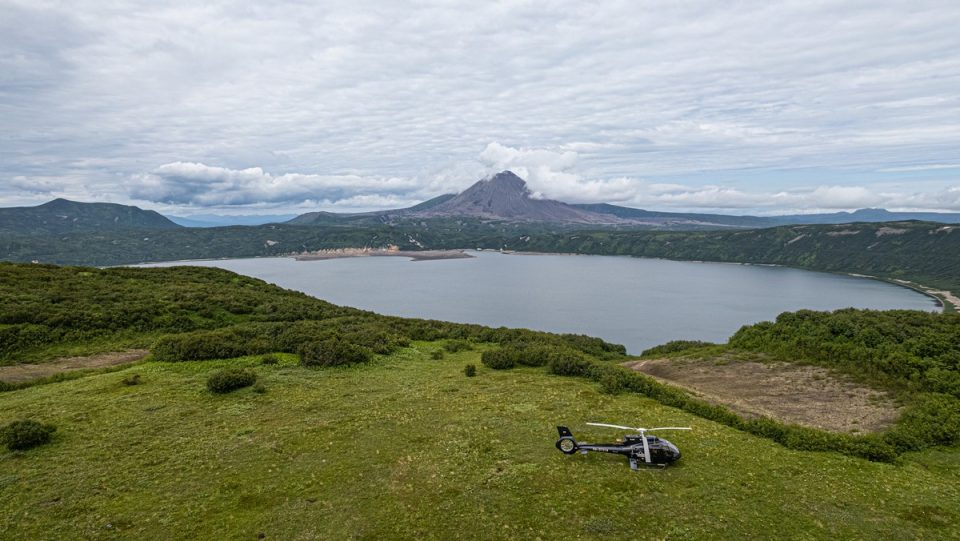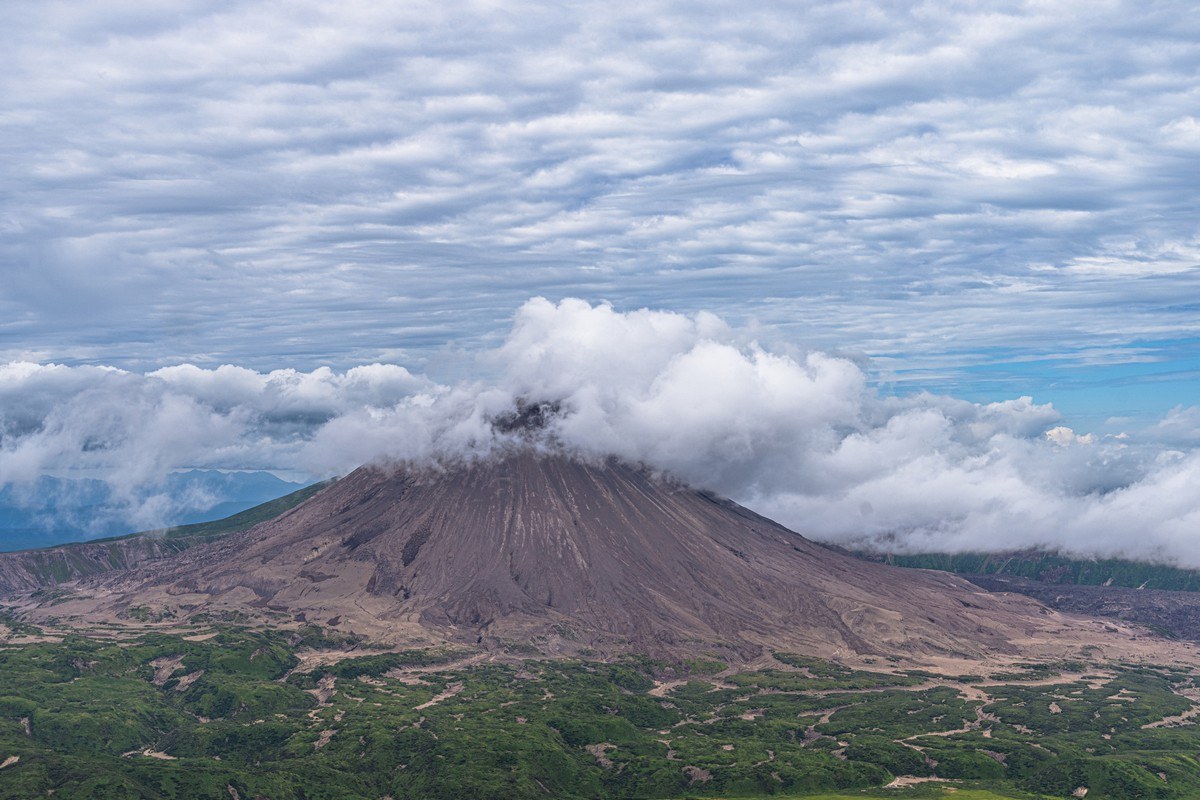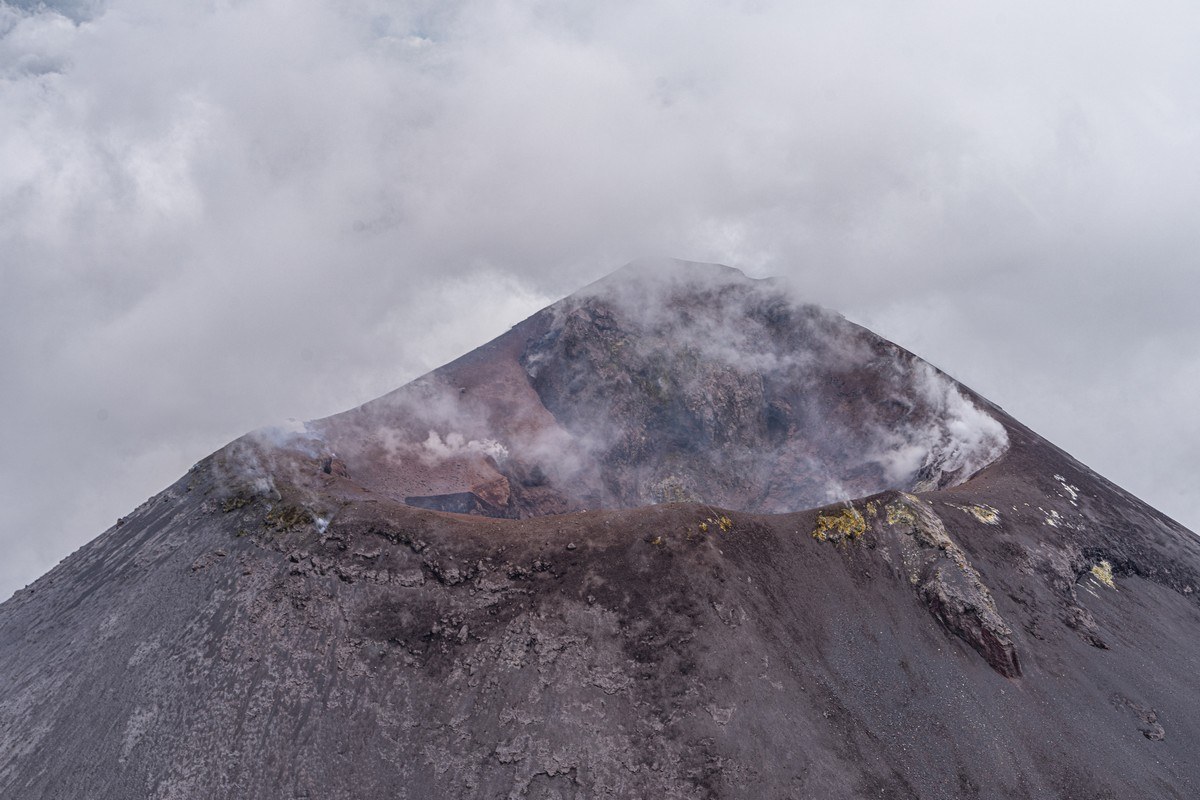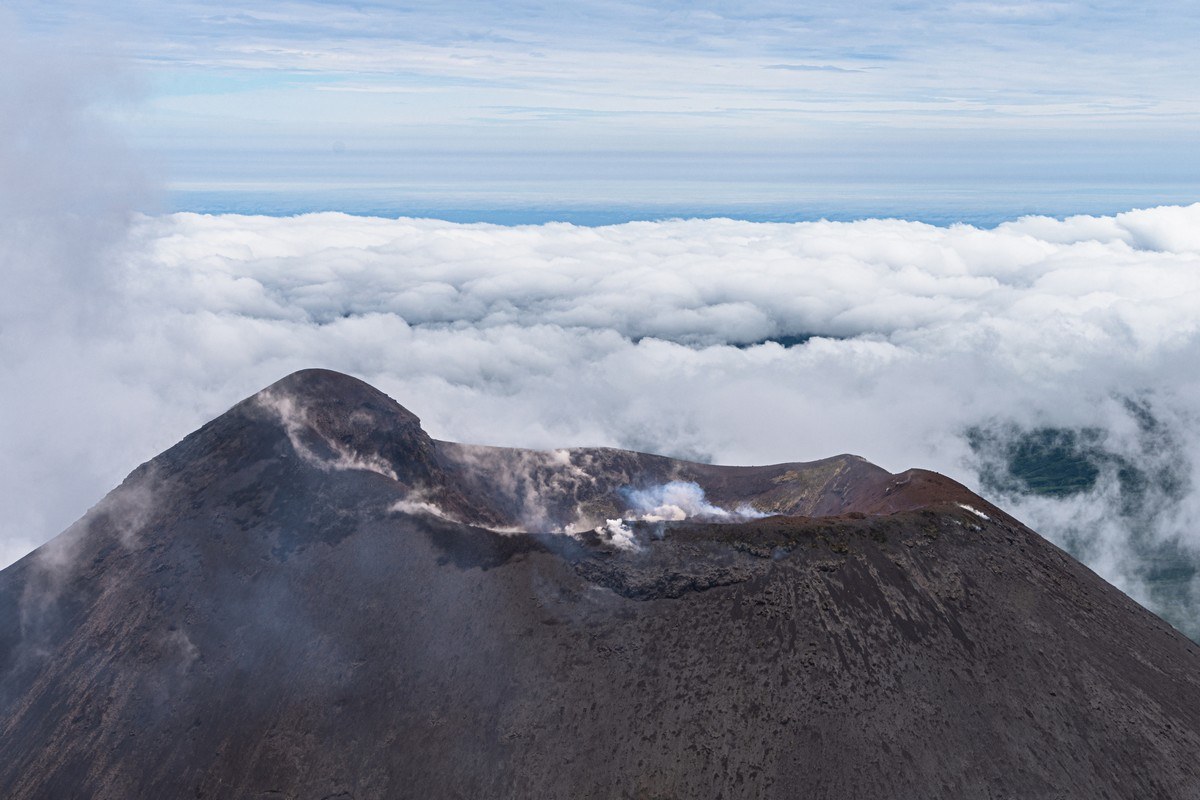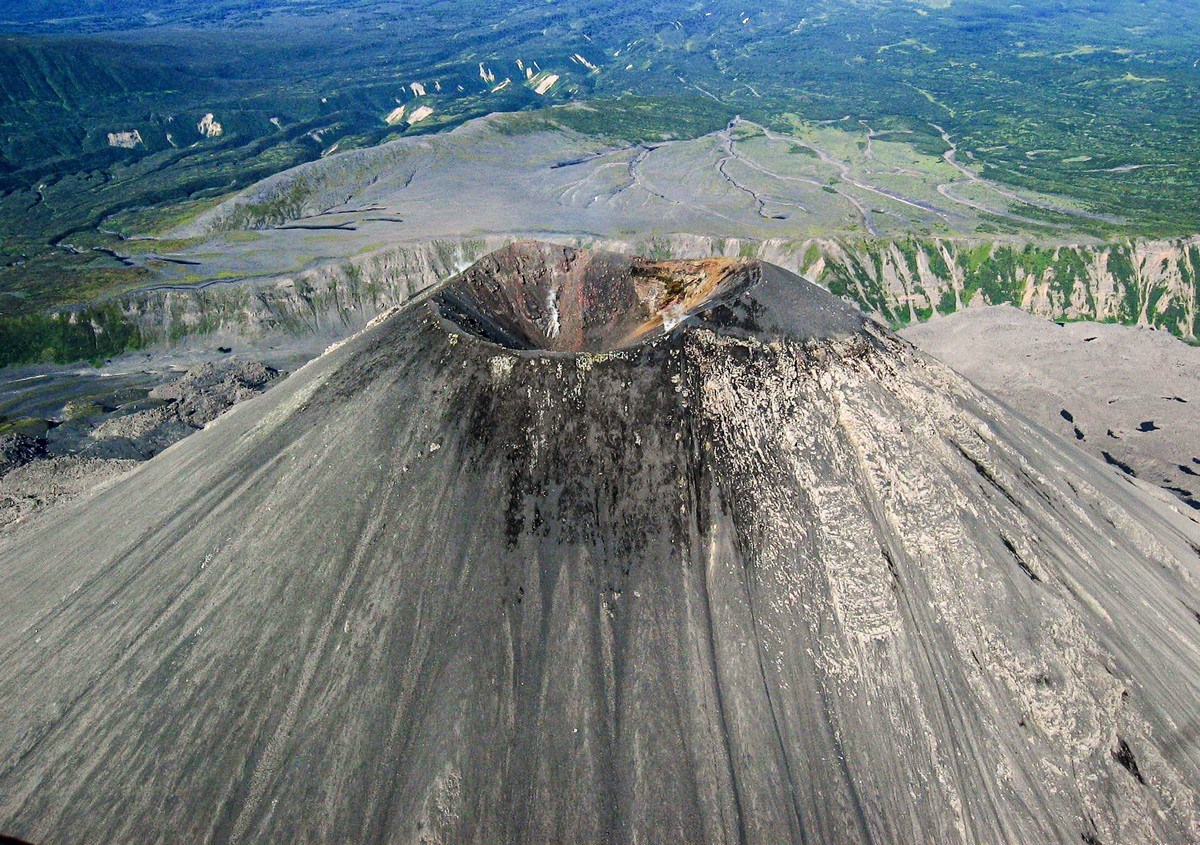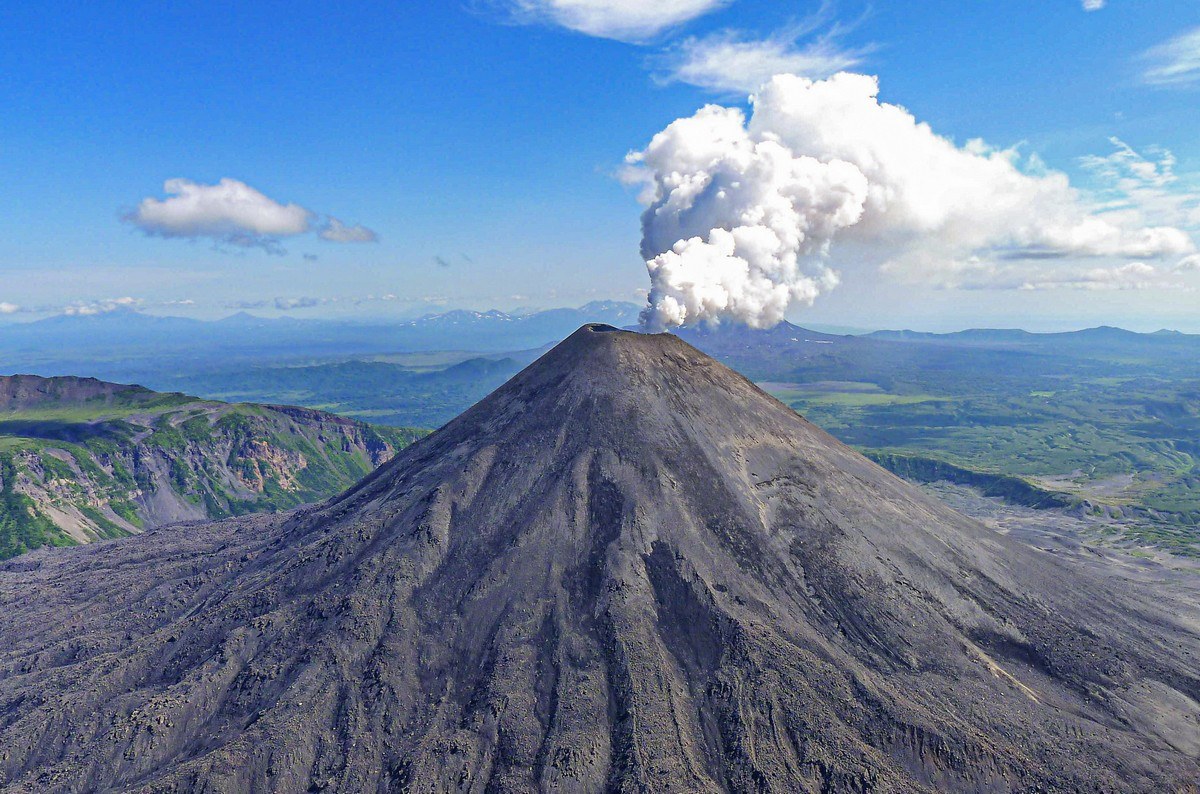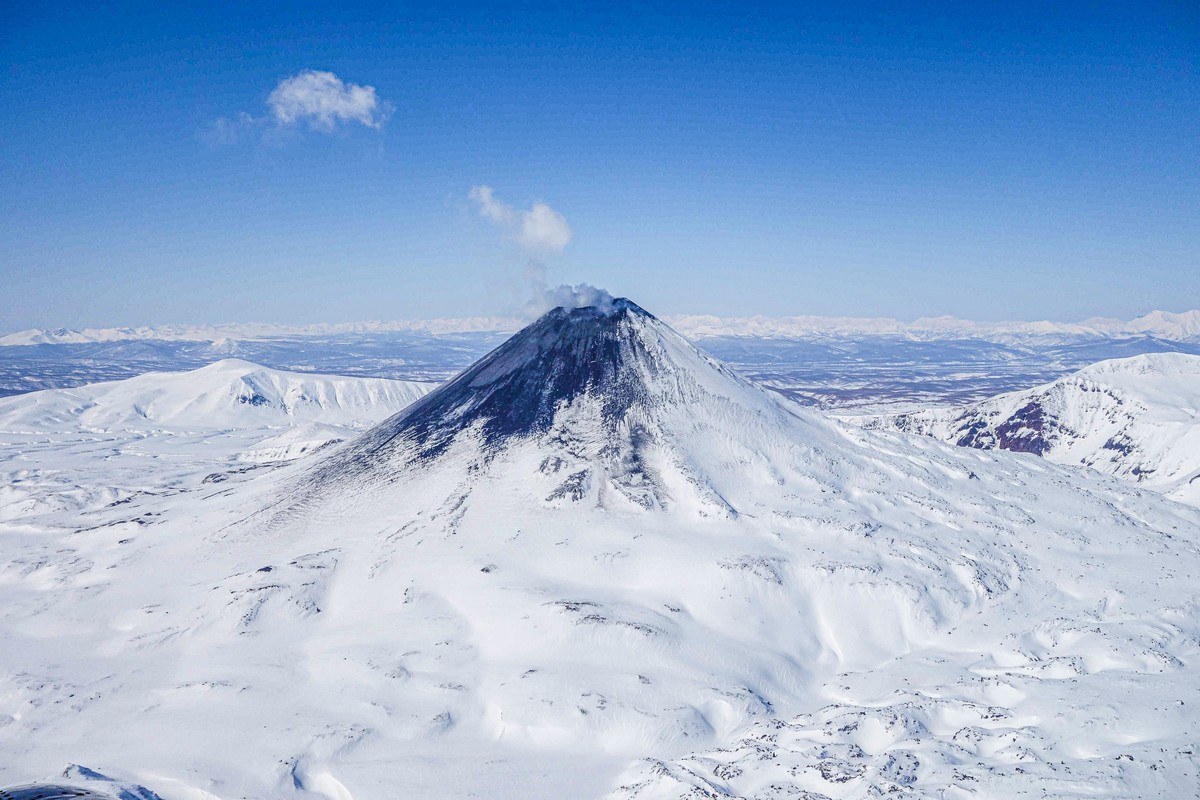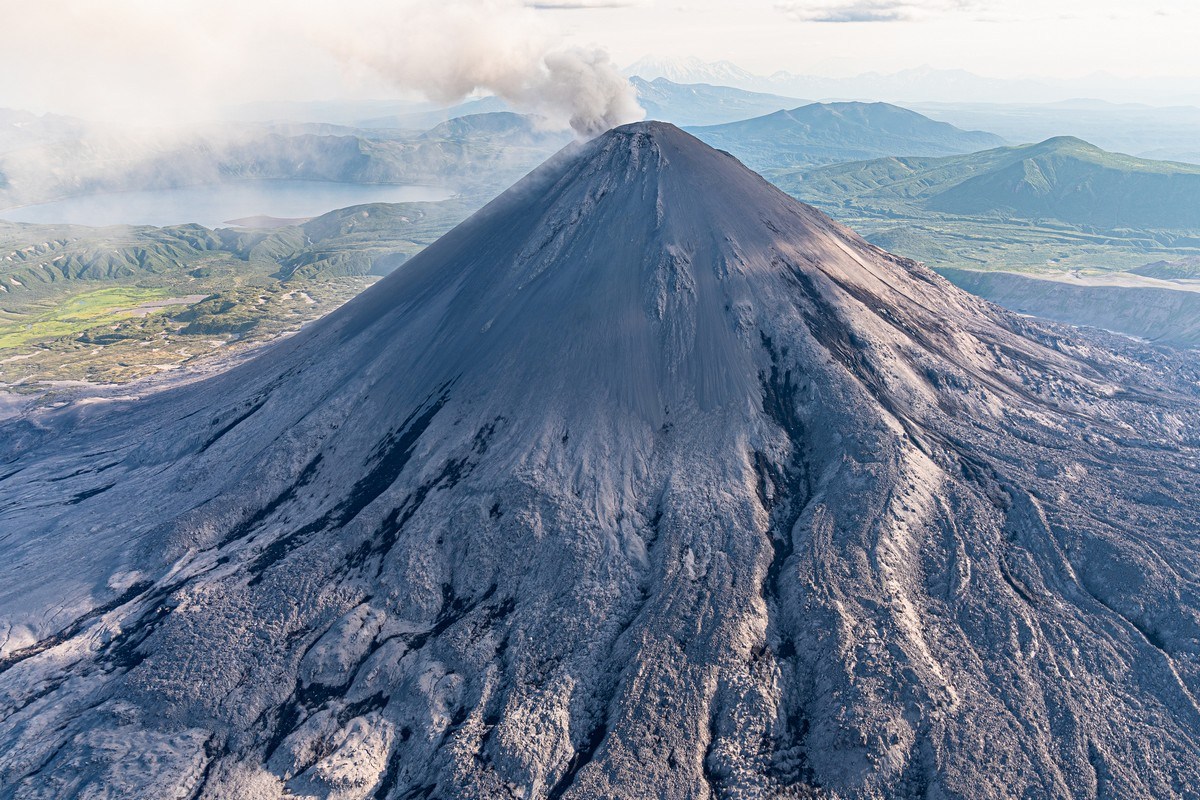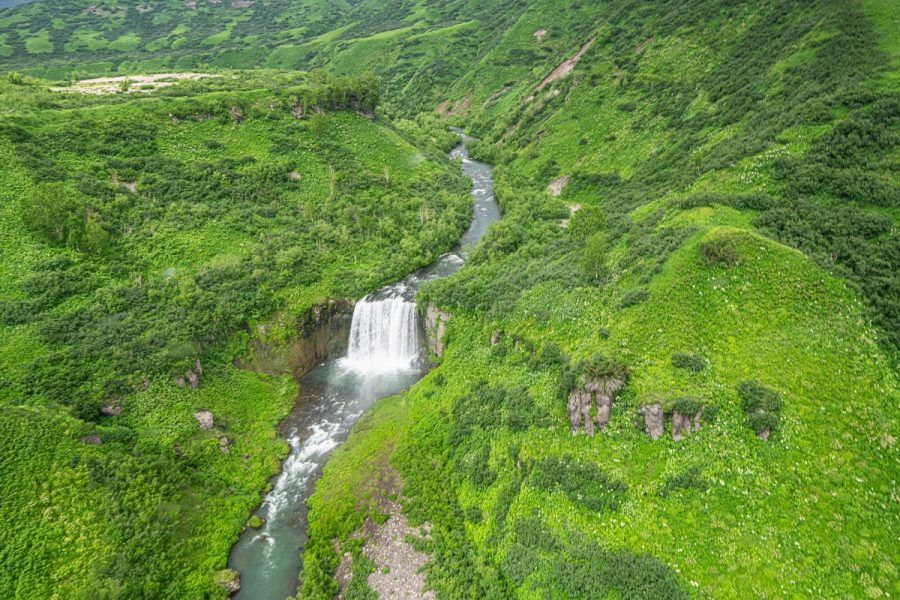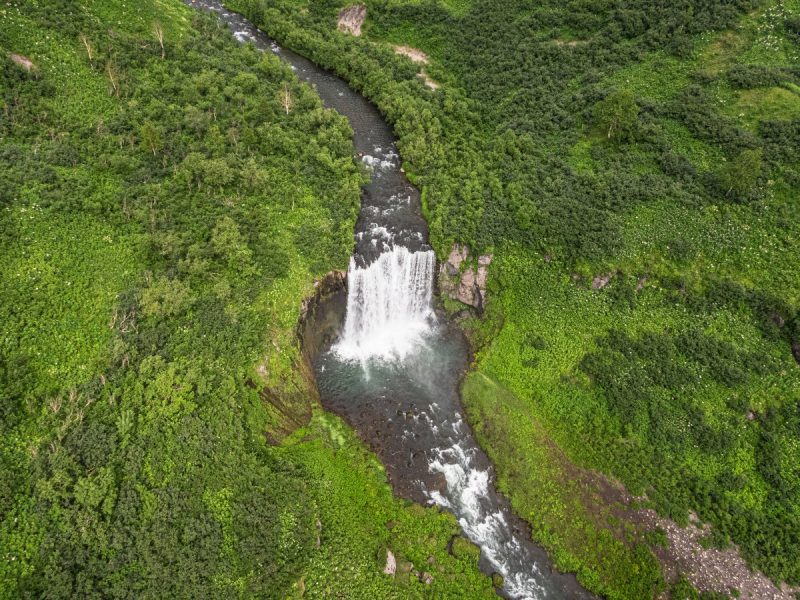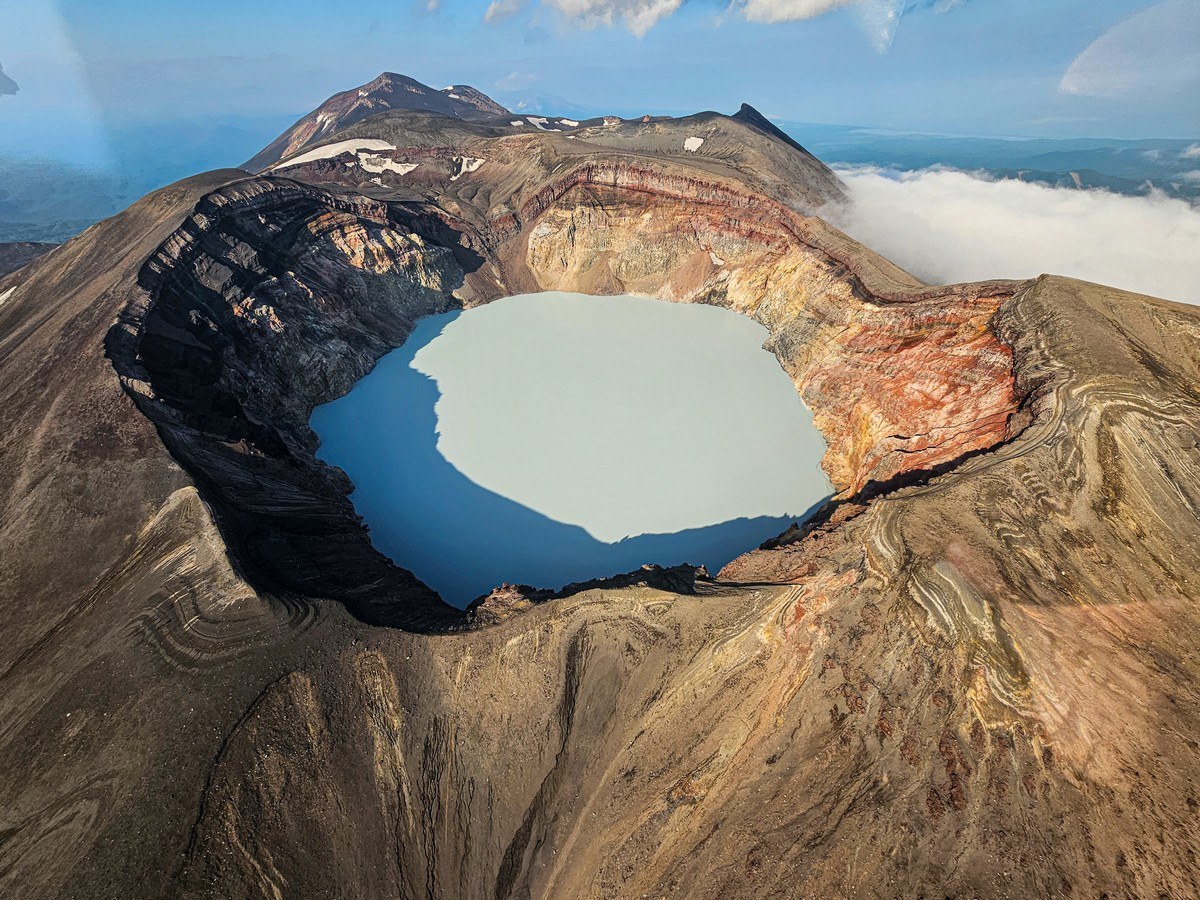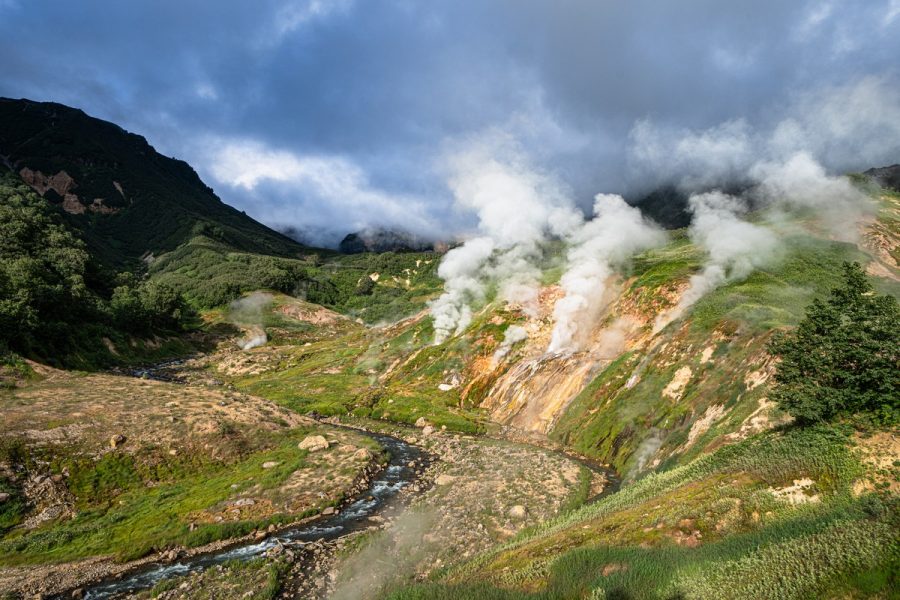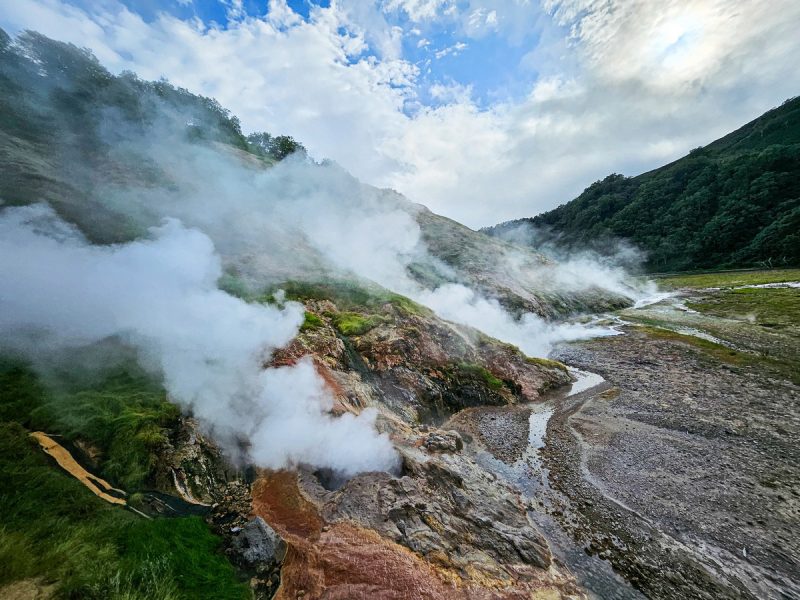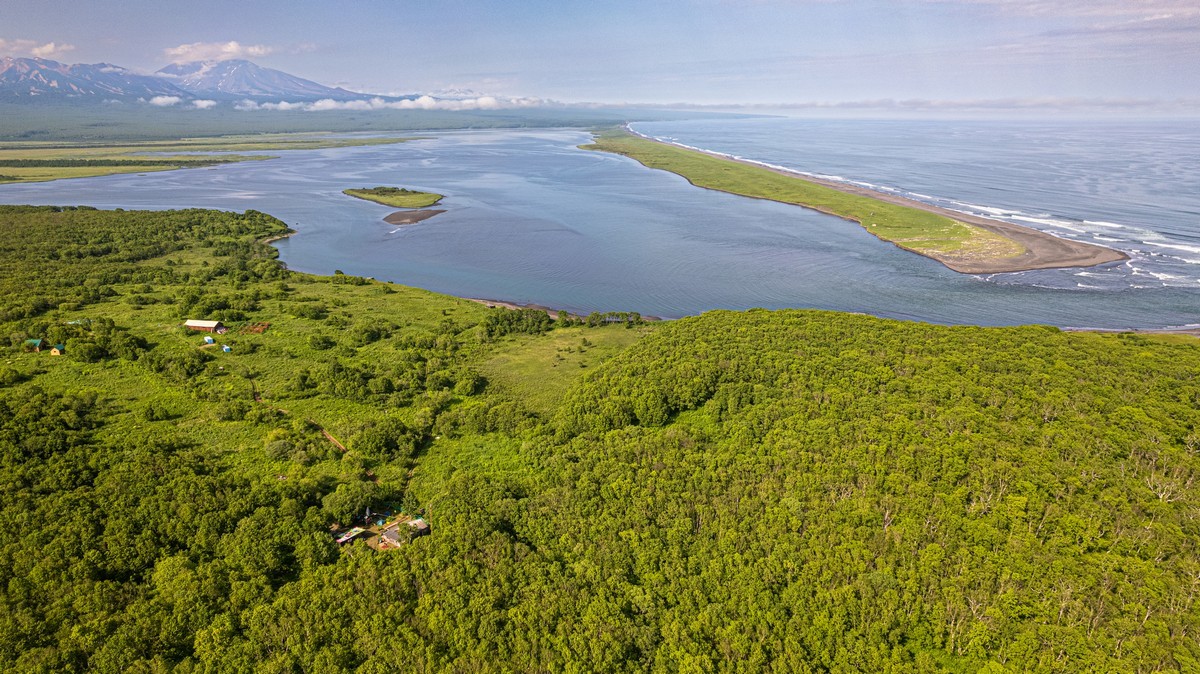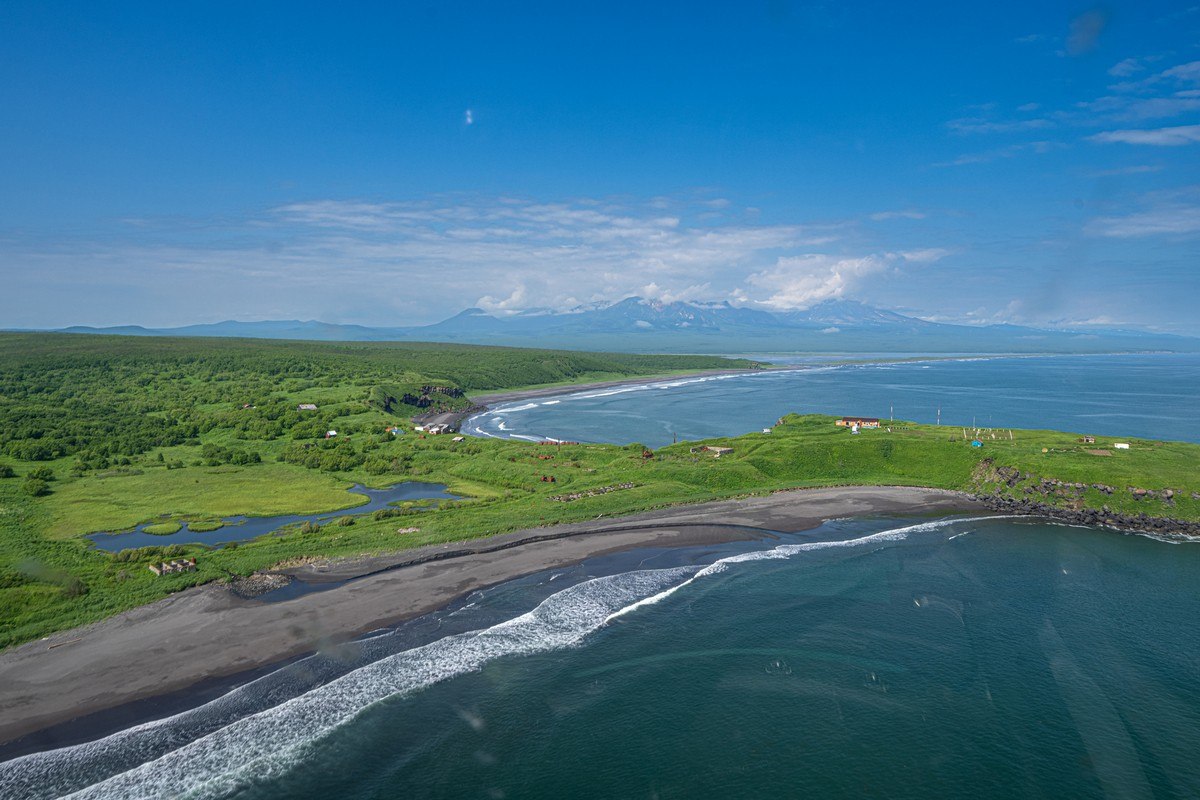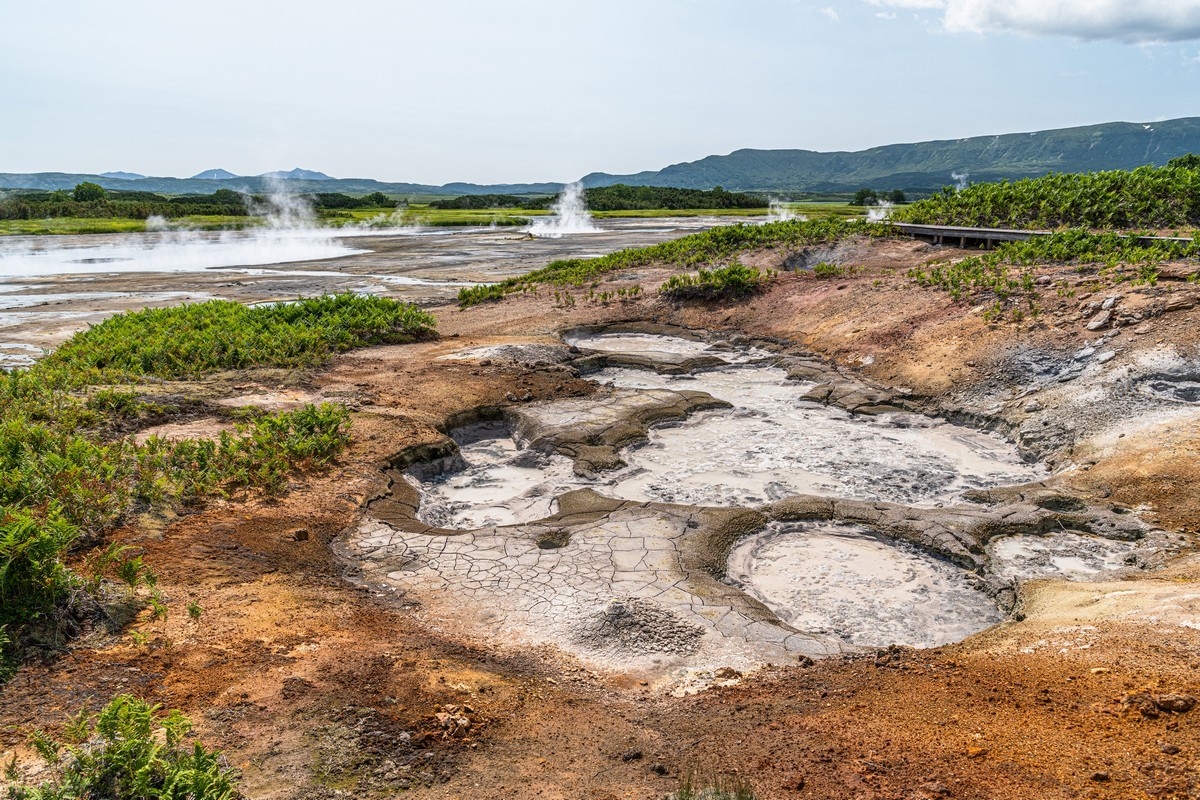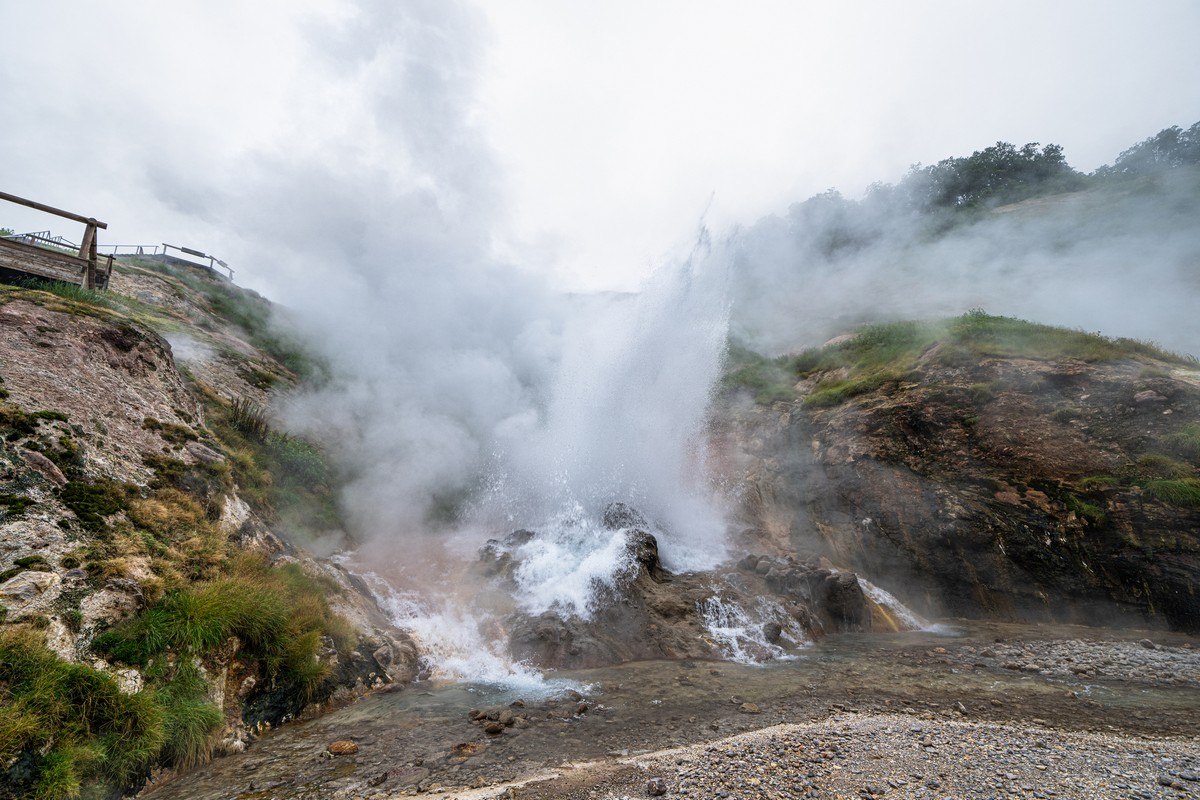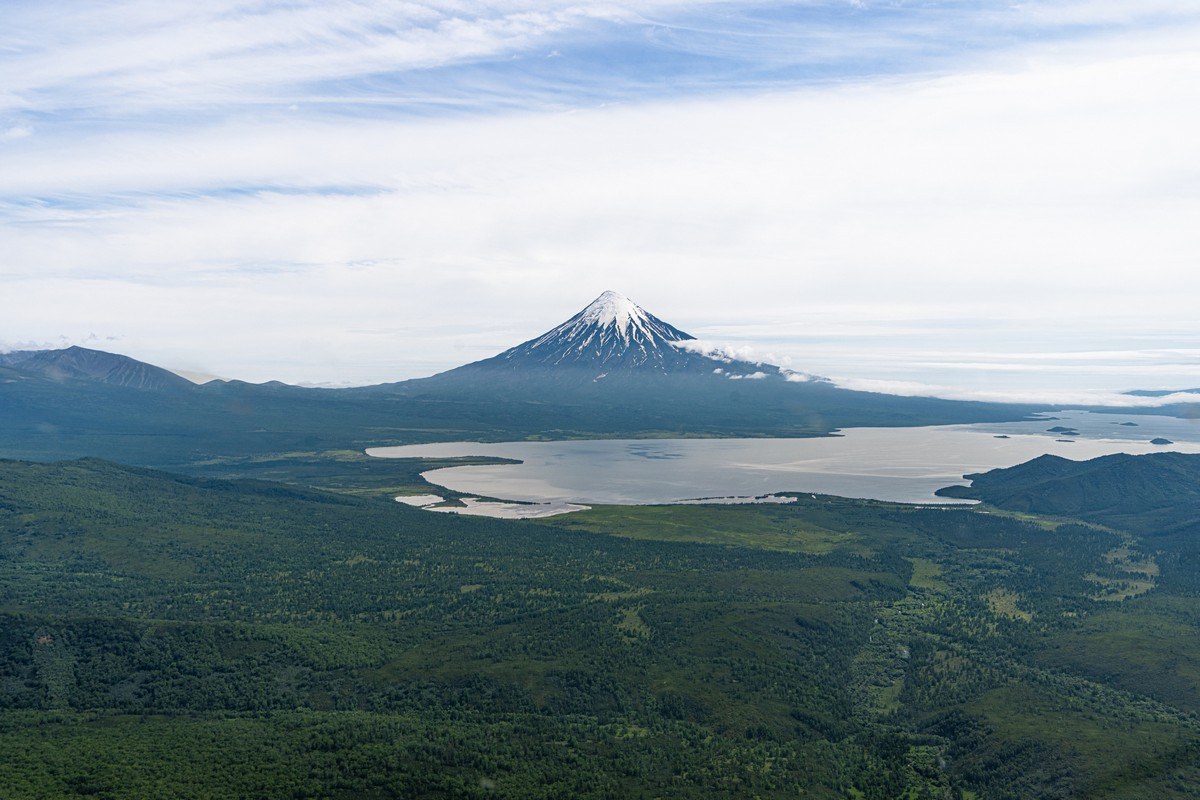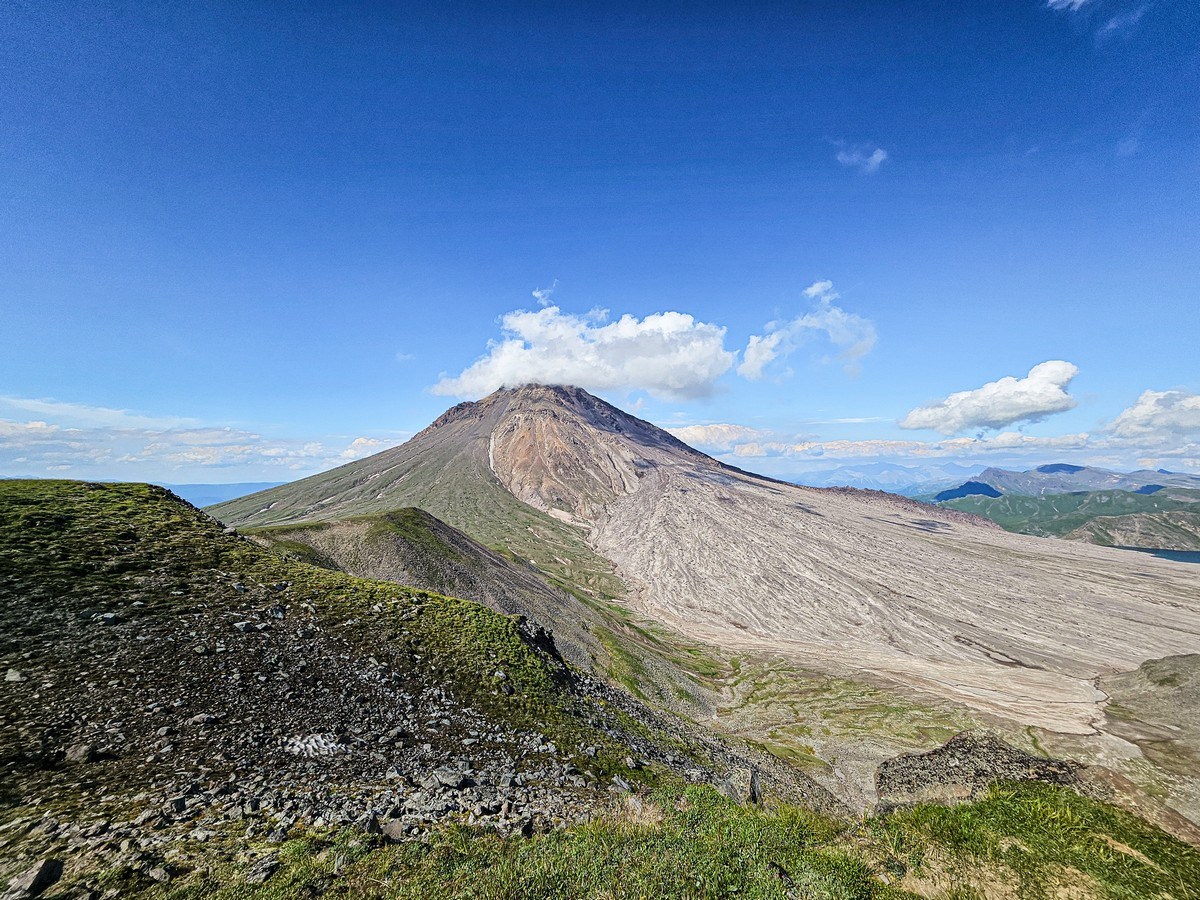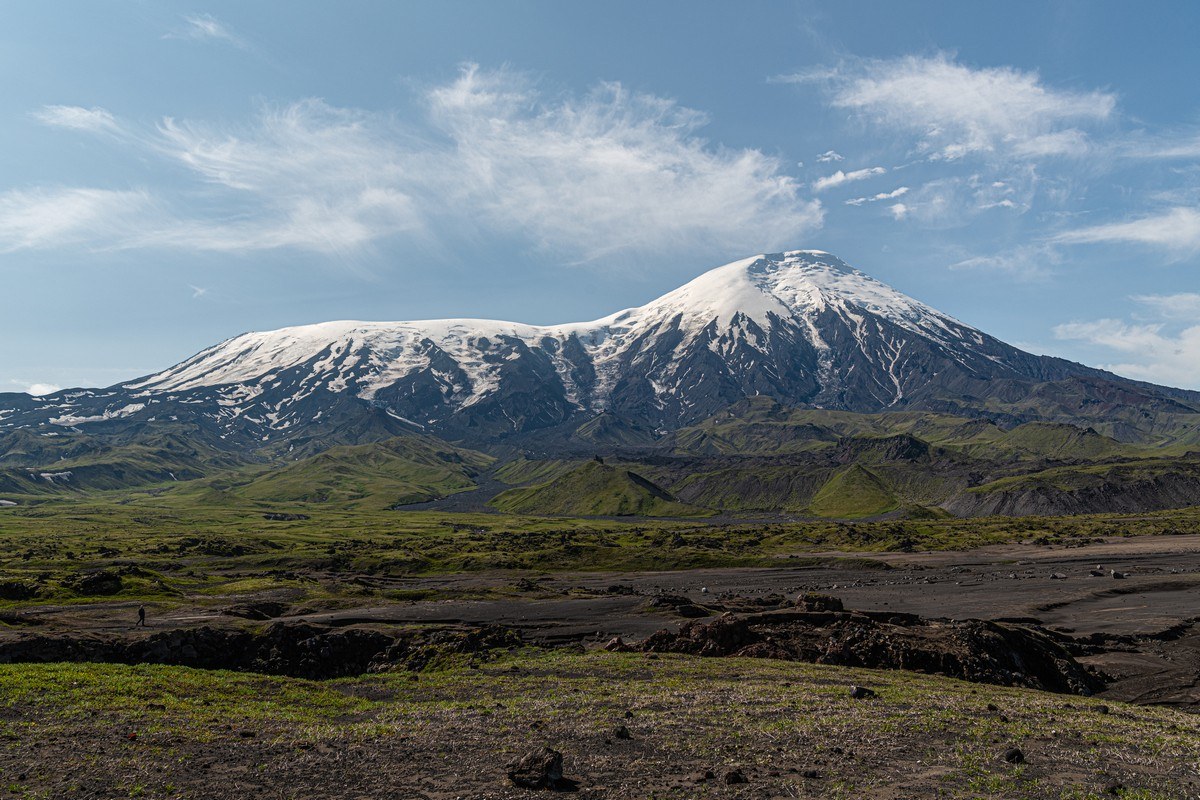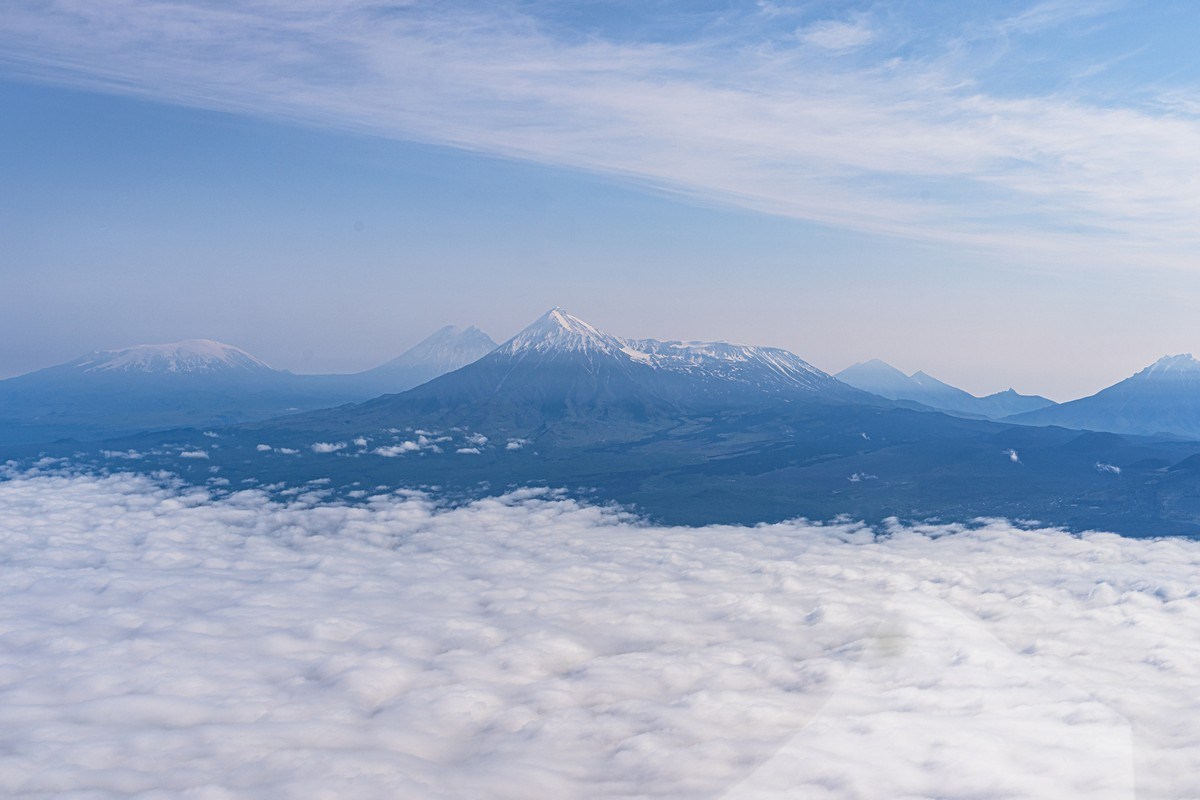December 11, 2024
Khangar – the Sredinny Range volcano with the picture-perfect lake.
Hi folks!
The Kamchatkan peninsula is where the North American and Pacific tectonic plates meet and constantly rub against each other – warping, destroying, and rebuilding the territory. This process leads to all sorts of natural wonders – both underground and on the surface…
Now, the volcanoes we’d already checked out on our Kamchatka-2024 trip (the Klyuchevsky group, Kizimen, Tolbachik, the Uzon caldera, the Valley of Geysers) happen to be rather new creations of nature. The Valley of Geysers is only several thousand years old (judging by the geyserite, apparently), and the mentioned volcanoes and others nearby are also mere wee nippers: merely tens of thousands of years old – not millions, and certainly not tens of millions like, for example, the Himalayas.
Thus, the east coast of Kamchatka and all the volcanisms along it I’ve already shown you are all relative new kids on the block peninsula. But down the middle of Kamchatka is the so-called Sredinny Range (sredinny = middle) – where there was volcanic activity hundreds of thousands of years ago – if not millions…

And it’s beautiful – incredibly so. And that’s where we were headed next…
